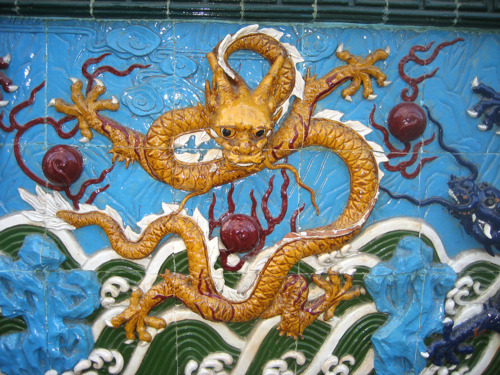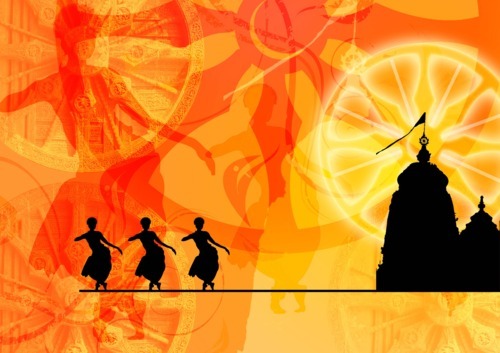Most Malaysians are familiar with the local term 'Chindian', which describes children of Chinese and Indian parentage. As a Chindian myself, I feel particularly connected to the ongoing controversy surrounding the baby's race and can't help but notice that the Chindian narrative regarding this matter has not been considered.
When I told my 10-year-old sister about the debate sparked by Baby Shay's Chindian roots, she told me that her own teacher had insisted that she was Indian even though she clearly told her she was Ch-indian.
“I am not Indian. I am different from the other Indians at school even though my paper says Indian. I look Malay but I'm not. But I am also not Chinese. So I can only be Chindian,” she said.
She knows first-hand how it feels to be shoved into a category which means nothing to her.
As a child, I too got into trouble for raising my hand for both the Indian and Chinese categories. But I always felt like I had to say I was both.
Otherwise, I would feel guilty because it seemed like my Chinese heritage was being left out of everything and that would not be fair to my mom. Guilt is a heavy burden for a child to start carrying on the first day of school.
As I grew up, I would sometimes tick the box that said “lain-lain” because it seemed like a better description of who I was...
Read Komunitikini:
by Temily Tianmay Jaya Gopan

(photo by sateda)
The birth of Baby Shay to Subang Jaya assemblywoman, Hannah Yeoh, has shed light on a minority population that has yet to receive significant attention. Shay’s father, and Yeoh’s husband, is Indian. Most Malaysians are familiar with the local term ‘Chindian’, which describes children of Chinese and Indian parentage. As a Chindian myself, I feel particularly connected to the ongoing controversy surrounding the baby’s race and can’t help but notice that the Chindian narrative regarding this matter has not been considered.
When I told my 10-year-old sister about the debate sparked by Baby Shay’s Chindian roots, she told me that her own teacher had insisted that she was Indian even though she clearly told her she was Ch-indian.
“I am not Indian. I am different from the other Indians at school even though my paper says Indian. I look Malay but I’m not. But I am also not Chinese. So I can only be Chindian”, she said.
She knows first-hand how it feels to be shoved into a category which means nothing to her.

(Image of Orissa by barunpatro)
As a child, I too got into trouble for raising my hand for both the Indian and Chinese categories. But I always felt like I had to say I was both. Otherwise, I would feel guilty because it seemed like my Chinese heritage was being left out of everything and that would not be fair to my mom. Guilt is a heavy burden for a child to start carrying on the first day of school. As I grew up, I would sometimes tick the box that said “lain-lain” because it seemed like a better description of who I was.
But does my race define me? What exactly do we mean by “race”? We seem to be having a debate without really defining the term. The Oxford Paperback Dictionary defines “race” as, (1) one of the great divisions of mankind with certain inherited physical characteristics in common (e.g. colour of skin, shape of eyes and nose); (2) a number of people related by common descent; (3) a genus or species or breed or variety of animals or plants.
If definition (1) were true, then all Chindians should be considered Malay because we have the same skin color. But then again, there are also very fair Malays and very dark Malays. Should they be considered Chinese or Indian or “lain-lain”?
If definition (2) were true, then we are all one race because we are ultimately from a common descent if we trace it far back into our evolutionary history. Why stop at tracing it back to just a hundred generations?
Definition (3) reinforces that we are one human family. My point in this is to show that the definition of race is arbitrary. It is impossible to categorize people based on their “race” and using the word “ethnicity” instead of “race” does not change the fact.
Ever since I left Malaysia for university abroad, I have filled in forms for university applications, scholarship applications and visa applications to multiple countries and not a single form required me to state my race. It is every time I come home, ironically, that I am asked about my race, a painful reminder that different races have different benefits in this land.
The message is loud and clear: Your race is who you are.
And this message is heard not just by adults, but subconsciously absorbed by children who can’t yet think for themselves. A five year old Chinese girl came over to my house to play one day. She never second-guessed being comfortable with me because I speak Mandarin. Upon seeing my father, however, she came over and whispered in my ear: “Who is that dirty man over there?” It turns out that she had been told that all people who were darker than her were dirty. But still she ran into my fathers arms with a big smile when he initiated a game with her. Prejudice had not yet consolidated itself in her heart.

(Photo by asifthebes)
Our message seems to be contradictory. On the one hand, we proudly parade the 1 Malaysia sign. But on the other hand, we have institutionalised practices that remind us at every turn of how we differ from each other. Malaysia proudly proclaims its unity in diversity, but then forces the literal embodiments of this, children of mixed race, to give up their diversity and tick only one box.
In order to achieve unity and truly establish one common identity, shouldn’t we instead be reminded at every opportunity of what we share in common?
And if we really can’t get over the urge to physically distinguish ourselves from each other, a better way of going about it would be to actually look at our genetic differences. At least we would have a clear defining factor. Japanese researchers have found that people who have dry ear wax and wet ear wax have a different gene.(http://www.nytimes.com/2006/01/29/science/29cnd-ear.html) Perhaps our forms should now have a “dry wax”/ “wet wax” category for us to choose from.
The fact is that we are one human family. Science has proven it. But how long will it take for us to start practising it?
I am proud of my Malaysian heritage. This includes, among others, Indian, Chinese, Malay and Asli heritages. I do not prefer one over the other just because of who my ancient ancestors were. They all contribute to my thoughts, emotions and ideals. How then is it fair to force me and other children of mixed race to choose one over the other? I refuse to pilih kasih.
I praise Hannah Yeoh and her husband for at least attempting to do justice to their child. Shay is definitely not just “Chinese”, as her papers now show.
Home Minister Hishammudin Hussein was quoted saying that “Whatever changes involving this matter will need amendments to the law and considerations on the constitution.”
Laws and constitutions are man-made to safeguard the interests of the people. Once upon a time in history, highlighting our racial differences may have safeguarded our common interests. But this is no longer the case. Law and constitutions are man-made and therefore can change to cater to the needs of the present time.
One of my favorite authors, Shoghi Effendi, wrote:
“If long-cherished ideals and time-honoured institutions, if certain social assumptions and religious formulae…no longer minister to the needs of a continually evolving humanity, let them be swept away and relegated to the limbo of obsolescent and forgotten doctrines…For legal standards, political and economic theories are solely designed to safeguard the interests of humanity as a whole, and not humanity to be crucified for the preservation of the integrity of any particular law or doctrine.”
And if it doesn’t change, let us all, Chindian or not, tick “lain-lain” in an attempt to blur the lines that divide us.
Watch Temily’s interview on the brand new Komunitikinitv show, My Dua Sen, here, where she takes on the infamous Brain Drain, and introduces his kissing cousin: Love Drain.
Read and watch what is said:
Is Chindian like a chapati?
The further adventures of My Dua Sen, the semua boleh show of Komunitikinitv
China! India! The original gangsta civilisations that will soon retake the world! But Malaysia has no need to fear the two titans, because… we have the Chindian community. Imagine the comparative advantage.
For those who came in late, Chindians, as we fondly call them, are the offspring of Malaysians of nominally Chinese and Indian descent.
Temily Tianmay Jaya Gopan was born in Malaysia. Her father, a civil servant, is classified in official documents as “Indian” and her mother, a teacher, is “Chinese”. The lovely poetry of her name comes from the use of both her mother’s and father’s family names. Temily is currently reading journalism at the University of Hong Kong, which has given her a scholarship, which she accepted over an offer by the Malaysian government.
At the posh surroundings of Sri Ananda Bhavan restaurant in the gentrifying Bangsar Utama, My Dua Sen asks Temily about being Chindian, the hoohah over the race of Hannah Yeoh’s baby and, where in the world bright young things can find a home, if not where they were born?
Take note, Talent Corporation. Tem says that your nemesis, Brain Drain, now has a side-kick: Love Drain.
Will Temily come home?




No comments:
Post a Comment
Note: Only a member of this blog may post a comment.